‘Evil Dead Rise’ Director Lee Cronin on Directing Blood, Puke, and Kids
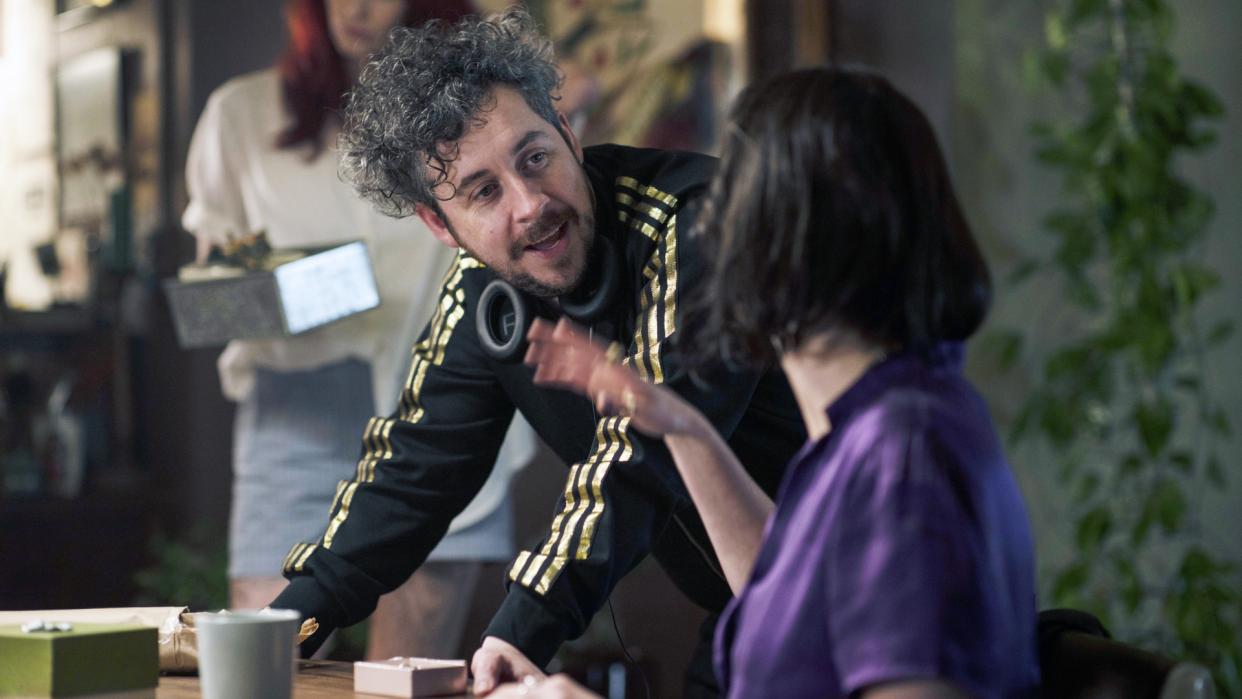
- Oops!Something went wrong.Please try again later.
- Oops!Something went wrong.Please try again later.
- Oops!Something went wrong.Please try again later.
Dormant for ten years, the Evil Dead have finally been exhumed by Warner Bros. and “The Hole in the Ground” director Lee Cronin.
The urban horror show — in theaters this Friday — plays out in the totally screwed upper floor of a Los Angeles apartment newly infested with Deadites. And though it’s set far from the cabin in Sam Raimi’s original trilogy, the spirits of the legendary 1981 cheapie, its brilliant comedic sequel from 1987, and even a twinge of its divisive (stupidly named) third chapter, 1992’s “Army of Darkness,” live on in this disturbed metropolis.
More from IndieWire
When Anna Camp Said 'No' to Being a 'Pitch Perfect' Overachiever, Everything Changed
'Evil Dead Rise' Ending Explained: Director Says 'It's a Universe Opener'
“I’m a fan of the movies, but I had no interest in making another ‘Evil Dead’ movie at the cabin because they’d done a reboot,” Cronin told IndieWire in an interview via Zoom, referencing Fede Álvarez’s ruthless, blood-soaked take on the Necronomicon from 2013. “So I wasn’t gonna reboot a reboot. And if you’re gonna change it up, you may as well go to the other end of the spectrum. The top floor of an apartment in downtown LA is about as far as you can get from a cabin in the woods without leaving the planet.”
In the film, Alyssa Sutherland stars as a tattoo artist and mom to three kids, played by Morgan Davies, Gabrielle Echols, and Nell Fisher, who see Lily Sullivan show up as their guitar technician aunt just in time for the fucked up fun to begin.
Cheese graters, tattoo needles, and a truly terrifying doll on a stick — long live Staff-anie — spice up a violent regurgitation of the blood, vomit, and bloody vomit we’ve seen in past installments. And as a matter of tonal volume, “Evil Dead Rise” is the series’ loudest yet: a real turn the volume up to 11 sort of experience. (And yes, some spinals do get tapped.)
“Something I’ve done previously when I’ve worked is, I’d play music on set, especially to time creepy tracking shots and stuff like that,” Cronin said. “But because this movie’s so heavy metal in a lot of ways, I didn’t actually play music on set because I would’ve blown everybody’s ears out if I could find music to reflect the energy of the film.”
Read on for more from Cronin’s interview with IndieWire, as the filmmaker discusses the challenges of directing children and liquid, as well as the future of the Evil Dead franchise and use of practical terror on sets.
The following interview has been edited and condensed for clarity.
IndieWire: You’ve resurrected “Evil Dead” 10 years after the last film in the franchise. What’s your personal history with these movies?
Lee Cronin: It goes back to being nine years old and my dad showing me “The Evil Dead” and “Evil Dead 2” back-to-back on VHS. He’d rented them out and I lived in a home where there were a lot of horror fans in my house and I was the youngest sibling by many years. I was exposed to movies I shouldn’t have seen at a very young age, and they dug their claws in hard and clung on.
Do you remember preferring “The Evil Dead” or “Evil Dead 2” when you saw them the first time?
Hard to say at the time, but as I re-watched the movies into my teenage years, “Evil Dead 2” was always kind of my go-to. I adore the first one as in, I’ll watch that once a year. But I could watch “Evil Dead 2” once a month just for the entertainment factor.
These movies have a well-known, and in many ways, beloved formula. Someone reads a book they shouldn’t, someone else gets possessed, all hell breaks loose. How did you approach tweaking that recipe for “Evil Dead Rise”?
I had to chase down the characters and the setting and the circumstances first, and then figure out how to make it all work within that. It was hard, going into a city because it’s like, “How do I get a chainsaw into an apartment building? How do I get the book there and how is the book found?”
Once I set the context and set the world and set the characters, I had to look within the confines of that to find the answers. So that’s how I went about it, was to set it up and then go look in the corners for how I could bring those pillars of the franchise into play.
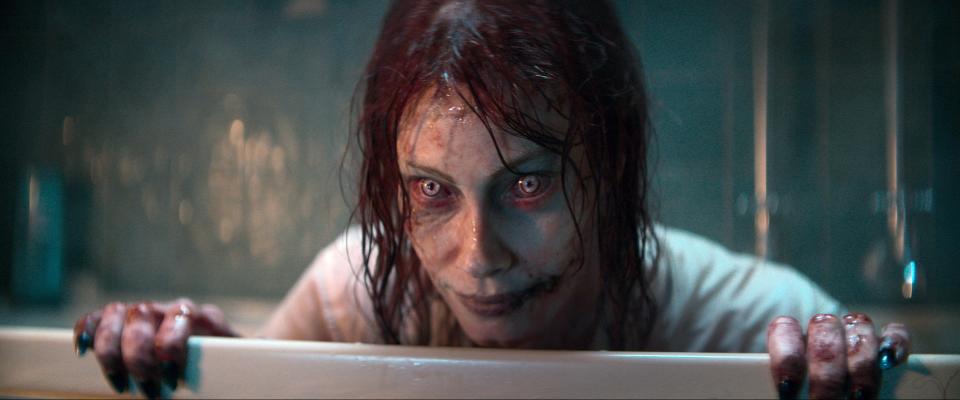
©Warner Bros/Courtesy Everett Collection
The cabin has been one of the more consistent parts of the Evil Dead franchise, save “Army of Darkness.” What challenged you moving into an urban setting?
Look, I said I’m a fan of the movies, but I had no interest in making another “Evil Dead” movie at the cabin, because they’d done a reboot. So I wasn’t gonna reboot a reboot, and if you’re gonna change it up, you may as well go to the other end of the spectrum. The top floor of an apartment in downtown LA is about as far as you can get from a cabin in the woods without leaving the planet. So for me it actually felt like a very obvious choice, and like an obvious place to go.
Then in going there, it was what it offered in terms of a little view into the world and modern life: families living in small spaces and the pressures that come with that and the idea of home. So there was a lot of value in that that I was able to dig into and mine. All of that stuff matters because it actually makes the horror more valuable on the other end.
Right, you’ve got your characters in a space with things and people they’re intimately familiar with, as opposed to the more convivial dynamic of friends or young lovers visiting a cabin. What drew you to exploring the themes of family?
Actually, it’s interesting. I haven’t heard anyone put it in those terms. It is familiar, right? Like I know it instinctively, but I haven’t thought about that in a while. As you said, if someone knows where their own things are, it’s a world that they’re comfortable in versus, “What’s behind this door?” So that’s actually what’s different about this movie. It’s bringing that horror of the Deadites home and that was always the shortcut for me. That’s my little cheat card, my little pass.
What I love is telling horror stories in domestic circumstances that people can identify with, because then there’s a greater chance after they watch it that they bring that experience home with them. That’s what I love about horror movies, is that people can watch something and then re-experience it over and over again at home. So placing it in a familiar world is a beautiful shortcut.
How was it working with kids on a film this intense?
It was really fun because younger performers bring a great energy and an excitement that can actually raise your spirits when you’re deep in the trenches and try to make something like this. You’ve gotta be obviously protective and understanding their needs and how this works and working with them and their parents and their chaperones to make sure everybody’s comfortable and happy with what we’re doing.
But we all had a fun time on that set. Making a movie like this, it’s really, really hard. But it’s also really, really fun because of all the stunts and the effects and all the work that we were doing. For a young person to come into that, it’s like Halloween every day.
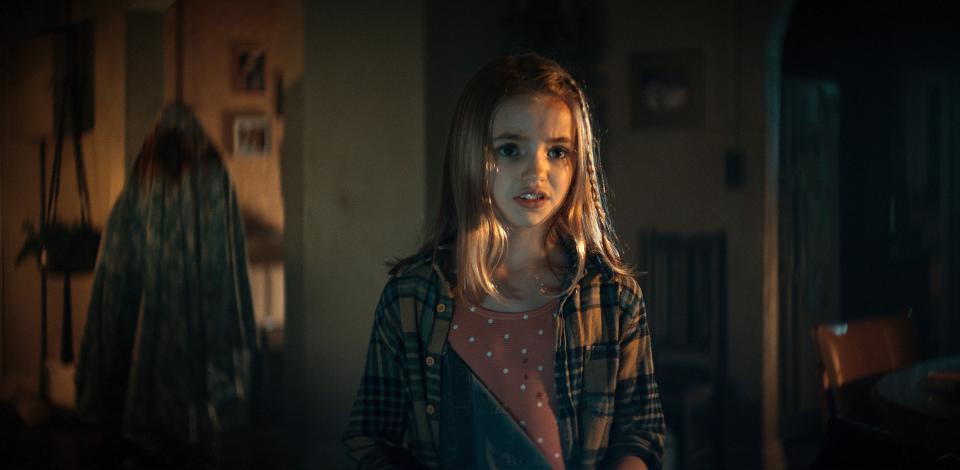
©Warner Bros/Courtesy Everett Collection
Both Sam Raimi and Fede Álvarez reportedly used practical terror with their casts, actually scaring their adult actors on set. What’s your perspective on that approach to directing horror? And did anything like that happen on “Evil Dead Rise”?
Every actor is different and has different needs. Some people you get to learn, you don’t want to tread on them too much and they have their process. Working with Lily Sullivan particularly, she liked me to kind of orchestrate the tone of the horror quite a lot for her. So something I’ve done previously when I’ve worked is I’d play music on set, especially to time creepy tracking shots and stuff like that. But because this movie’s so heavy metal in a lot of ways I didn’t actually play music on set because I would’ve blown everybody’s ears out if I could find music to reflect the energy of the film.
But what I did do for Lily quite a lot is something we just developed. I ended up building a kind of a collection of objects that made different sounds at my monitor. So I would smack things and make different sounds. Or when I wanted to give people a fright in terms of “Now’s your moment of reaction!” I’d know it’s coming up and then I’d smack this stick off a big plastic box to make a big echoing sound on set. I’m thinking that for my next movie, I might get a little drum kit so I can actually play the rhythm of the horror. Though some actors will probably try and burn the drum kit. [Laughs] But yeah, it’s fun to orchestrate things that way.
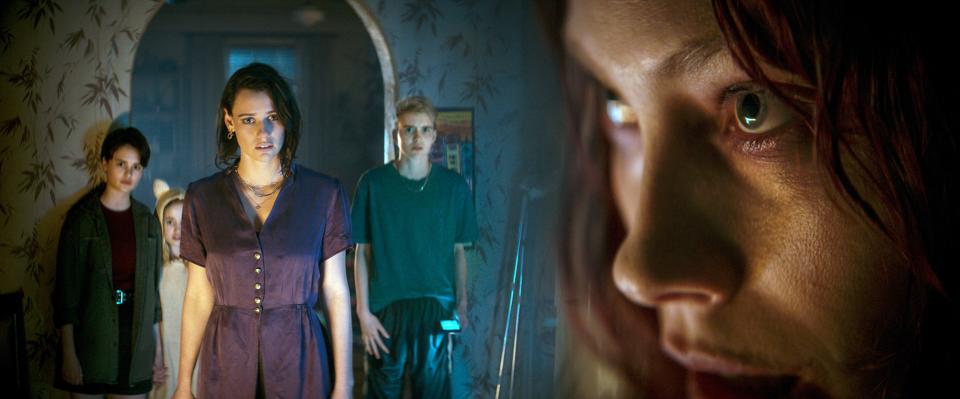
©Warner Bros/Courtesy Everett Collection
It’s funny you should bring up music because I was going to ask you — even if you didn’t play music on set — you have a guitar technician for your hero and your first-possessed victim is a tattoo artist. It’s a pretty punk movie aesthetically, very much in keeping with “Evil Dead” fan culture. Did you have any albums that you listened to while writing or editing?
I listened to the “Evil Dead 2” soundtrack on vinyl quite a lot while I was writing it: not to inspire the tone, but just to inspire me and remind me that I was making something important. I’m cautious with listening to music when I write because I remember years ago I was writing this werewolf script that never got made. It was this kind of strange thing, and I was listening to the “Drive” soundtrack so much that when I finished a draft, all I could think was, “This film was never supposed to feel like ‘Drive,’ and suddenly it has that vibe.”
So I try not to. Some people love listening to movie music when they write, but I tend to actually avoid it a little bit. Sometimes I even struggle when I’m writing to watch movies. Because when you’re watching a finished product that’s gone through all of the processing, then you’re looking at this like all over the place thing on a page, and you’re like, “Oh my God, I’m terrible at my job.” So yeah, I’m cautious about how things can influence me when I work.
I stopped counting the different types of vomit in this movie. How messy is something like this to make, and what are the challenges of — for lack of a classier description — directing puke?
Directing puke? You know what, it’s funny you bring that up because directing puke is not easy. In one of the major puke events that takes place in the movie, I had to reshoot it a few times cause I wasn’t happy with the performance of the vomit. [Laughs] Because it didn’t move how I wanted.
Then we shot this scene where the family had to back away from this growing vomit pool and it just wasn’t growing and spreading the way that I wanted it to. We had to redesign what was known as the “spew ramp.” We have to have like three go’s at that. That was one we kept coming back to, in the early weeks of the film. Yeah, directing liquid is actually quite challenging because you’ve gotta get a lot of factors, right? Then once you press the pour button, it does its thing and you can’t give it feedback.
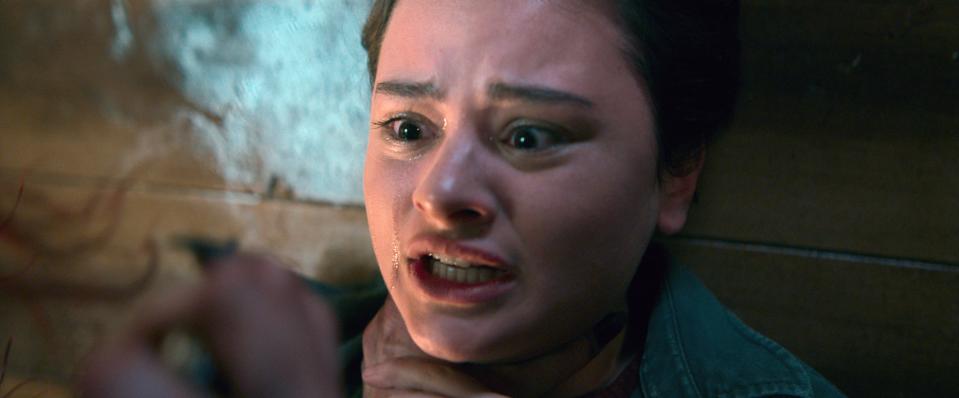
©Warner Bros/Courtesy Everett Collection
Would you say those were your most chaotic days on set?
Definitely not. No. No, no, man. I don’t wanna spoil anything, but there’s quite a hardcore monstrous conclusion to the movie. And everyday with that was really really challenging.
I think “Evil Dead Rise” is a bloody slash in a new direction, you know what I mean? It’s a universe opener, and I know it’s funny: people always wanna put that label, “sequel.” It’s definitely not a reboot. The best label or the most obvious label is that it is a sequel because it’s a continuous thing later in time on the same timeline as the stories that have happened before. It just doesn’t have a direct reference because it’s a new set of characters. But I just wanted to basically crack that universe open.
I know you said you wouldn’t want “reboot a reboot,” but what would you call “Evil Dead Rise”? A sequel? And how do you see the future of “Evil Dead”?
In terms of moving it forward there, I think there’s great potential there. I’ve got three to four different avenues that we can take.
[Editor’s note: Here Cronin’s last two answers have been abbreviated for spoilers. Read the rest of his thoughts on “Evil Dead Rise” and its ending, as shared with IndieWire.]
A Warner Bros. release, “Evil Dead Rise” hits theaters on Friday, April 21.
Best of IndieWire
Where to Watch This Week's New Movies, from 'Beau Is Afraid' to 'Evil Dead Rise' and More
The 23 Best Nude Scenes in Film, from 'Shortbus' to 'Blue Velvet'
Sign up for Indiewire's Newsletter. For the latest news, follow us on Facebook, Twitter, and Instagram.

